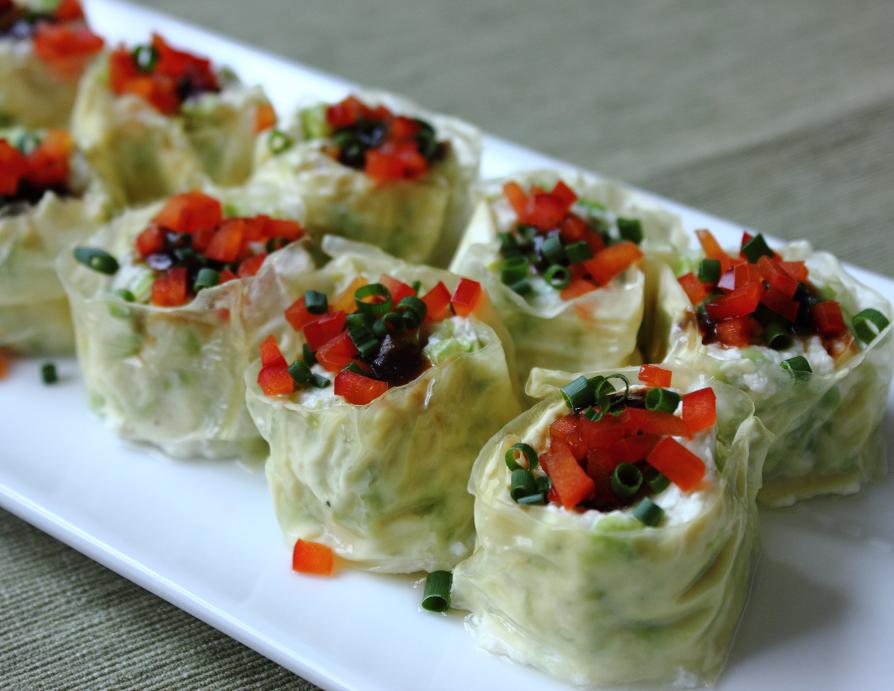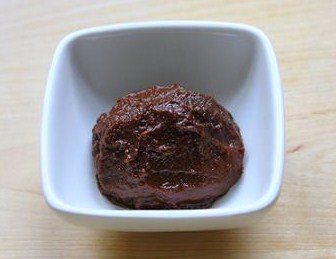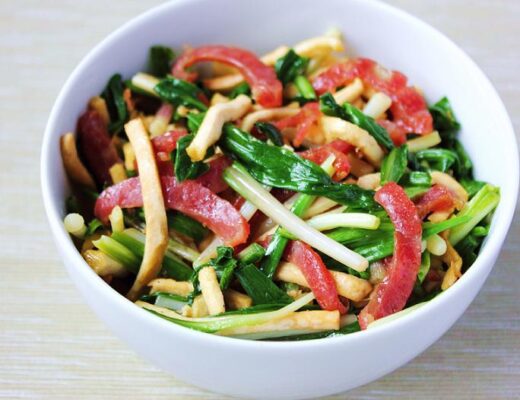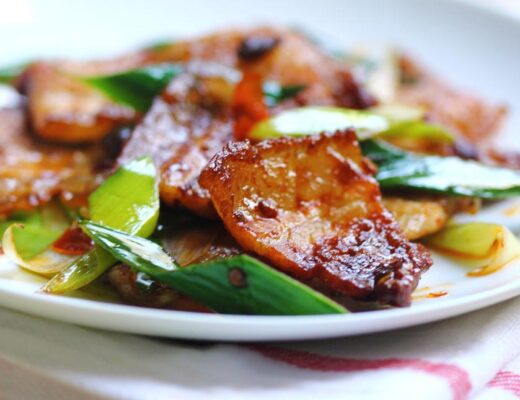Last Updated on November 27, 2020 by Simon Fan
The history of soybeans is fascinating. From their first domestication in China five thousand years ago, to their journey into regions via sea and land trade routes, each chapter is full of colorful stories and legends.
What’s even more fascinating is their importance and versatility as food. In ancient China, soybeans, together with rice, wheat, barley, and millet, were considered five sacred plants. Over the centuries, their significance in Chinese cuisine has not only endured but also evolved, with myriad culinary variations and applications being created. From soybeans, you can extract oil and protein, make soymilk and tofu, or use fermentation to make soy sauce, douchi (豆豉, fermented black beans), or furu (腐乳, fermented tofu), to name a few.
Soy-based ingredients can create wonders in your kitchen. You probably already have a few favorite recipes—perhaps mapo tofu is one of them?
The list of my favorite recipes featuring soybeans or soy-based foods is long and still growing: fried tofu skin rolls with minced shrimp, steamed tofu and pork balls, stir-fried green soybeans with pickled mustard greens, fish and tofu soup, home-style seared tofu … and, of course, mapo tofu!
As I was going through my list the other day, I asked myself, “Wouldn’t it be fun to create a recipe using soybeans in different shapes and forms in the same dish?”
Since then, my mind has been wandering through all the possibilities, with new ideas popping up every day…
This dish is one of them.
Tofu rolls with soybean sauce
Serves 2
Ingredients
7 oz (200 g) firm tofu
3 oz (85 g) thawed frozen green soybeans, coarsely chopped
Fresh tofu skin, enough to cut into 4 sheets about 5 X 7 inches (13 X 18 cm)
1 egg white
1 teaspoon potato starch or cornstarch
½ teaspoon salt
Freshly ground white pepper
1 teaspoon potato starch or cornstarch, mixed with 1 teaspoon water to make a slurry
Sauce
2 teaspoons huang jiang (黄酱, yellow soybean paste. See Note below) or another soybean paste
1 teaspoon soy sauce
1 teaspoon sugar
1 teaspoon sesame oil
1 teaspoon water
2 tablespoons diced red bell pepper
1 tablespoon finely chopped chives or scallion
Directions
- In a bowl, use the back of a spoon to mash the tofu into a coarse paste. Add the green soybeans, egg white, potato starch, salt, and a few grinds of white pepper. Stir to mix until well combined. Let stand for 10 minutes.
- Meanwhile, use a pair of scissors to cut the tofu skin into 4 sheets, each about 5 X 7 inches (13 X 18 cm). The tofu skin sheets should be pliable enough to make the rolls (moisten the sheets with some water to soften them as needed).
- Lay one piece of the tofu sheet on the work surface, with one of the short sides facing you. Arrange a quarter of the tofu mixture in the shape of a log along that side, and gently roll up the sheet until you reach the other short side. Use the starch slurry to seal the seam. Repeat with the remaining sheets and tofu mixture.
- Using a serrated or very sharp knife, slice each roll crosswise into 1-inch-thick (2.5 cm) rounds, taking care not to press too hard as the rolls are quite soft and delicate. Place the rounds on a heatproof plate that fits into a steamer. Steam over high heat until the tofu mixture is set and cooked through, about 10 minutes.
- Make the sauce by mixing all the sauce ingredients in a bowl. Depending on the brand of huang jiang you use, you may need to adjust the amount of soy sauce or sugar to suit your taste. Arrange the tofu rolls nicely on a serving plate. Drizzle with the sauce, and serve garnished with the bell pepper and chives.
Note: Huang jiang (黄酱), also called huang dou jiang (黄豆酱), means “yellow soybean paste”. It’s one of the traditional Chinese fermented pastes made from soybeans. Other ingredients include salt, water, wheat flour, and sometimes sugar. The “yellow” in the name refers to the fact that it’s made from yellow soybeans. The color of the paste is actually dark brown as you can see from the picture. With a rich and complex flavor resulted from fermentation, huang jiang is an important seasoning in Chinese cuisine, especially in the cooking of northern China. One of the most famous dishes featuring yellow soybean paste is zha jiang noodles (炸酱面).





Stir-fried tofu skin with green soybeans | Soy, Rice, Fire
August 30, 2020 at 9:52 PM[…] Tofu skin can also be used as a wrapper to make dim sum or tofu rolls, as shown in my previous post Soybean rhapsody. […]